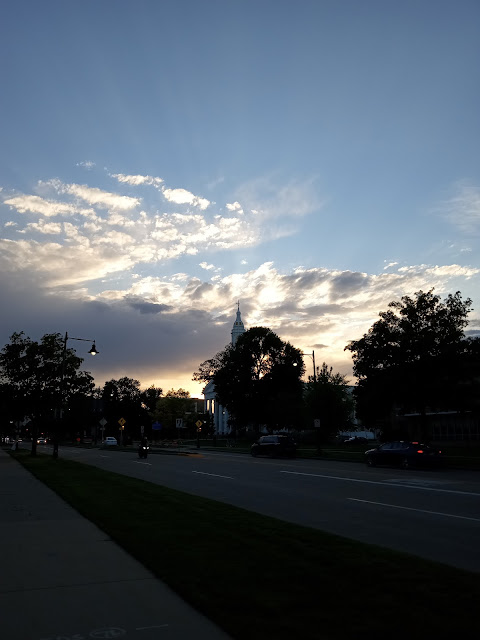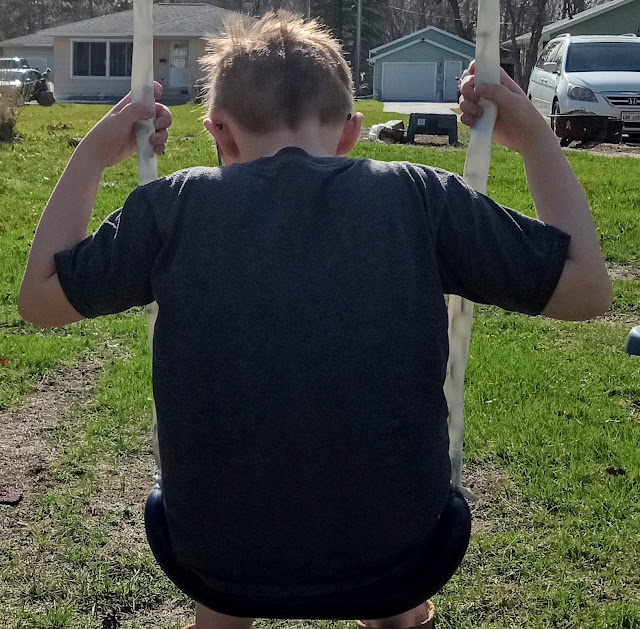The Photographic 'Truth' and 'Lie'
Hello Beautiful People,
https://www.instagram.com/p/Cd4nVg3uVU0/?utm_source=ig_web_copy_link
This week's post is about the Insecurity of the Photographic 'Truth'. This was another interesting venture as it plays with the question of the photograph being real or fake. I had a lot of fun playing with this idea in the way I presented my photos in the post, and how I wrote the story to go along with it.
Photo of the pink flowers from the IG post
I thought about how I could play with the photographic 'truth' while making the photo interesting. As seen in the original photo, I took an interesting angle where the camera is looking up at the flowers. These photos were taken outside of a dormitory named Ormsby. When I was putting the photos together in the post, I messed around with the filters to play with color. I wanted the flowers to pop with more color, so the blueish hint made the pink pop out more and they were brighter. I manipulated the color palette to make it more appealing to the eye. As Nathan Jurgenson describes in his book "The Social Photo on Photography and Social Media", he talks about the ease it takes to adjust a photo to bring out different aspects. He claims, "And, certainly, the emergence of digital photographic technology makes manipulation easier, more common, and explicit, heightening familiar insecurities about the image's relation to reality," (Jurgenson, 98).
I really wanted to play with the color contrasts since the original photo was not as bright as I wanted it to be. Also, it was my first time playing with filters in the project as I wanted the raw photo to be enough. As another example, here is a photo comparison of the same flowers:
Photo of the tree from IG post
Original photo
I planned on messing with the photos to see what I could get out of them. Not only that I was very intrigued by the psychology behind the viewer's experience with the photos. Most want to believe what they are seeing is reality and the rawness in right in front of them. On social media, it is almost the complete opposite where editing is the norm. The use of filters makes peoples' faces look airbrushed and perfect while making backgrounds more vibrant. When it comes to photography, editing a photo enters this new realm and new ideals. Jurgenson talks about the feelings and effects that digital manipulation has on the viewer. He describes it like this: "With the rise of digital or computational image-making, many have feared that digital manipulation means photography has or will lose any ownership of the truth, so much so that people debate whether to even call digital images "photographs" at all," (98).
The safety net gets ripped out from under them once they learn the tricks that are used. Blissful ignorance is no longer existing once the viewer realizes what happened. I wanted to create this false sense of security with something as simple as the colors. I made sure to adjust the colors just enough so that they would look bright, but not so bright that they do not look real. I did not want to drastically change the photographs where they barely touched reality, but I wanted to tweak certain aspects of them to enhance the look. At the same time, the story talks about how I was questioning the validity of what I was seeing. I believe they played in tandem.
I really enjoyed this week's adventure into the photographic 'truth'. It was fun to see how manipulating different things in the photo can make a difference in appearance. I did my best to play by the rules of reality while taking little steps over the line to test the limits. I hope you enjoyed this week's post and I will see you next week!
With lots of love,
Libby







Comments
Post a Comment